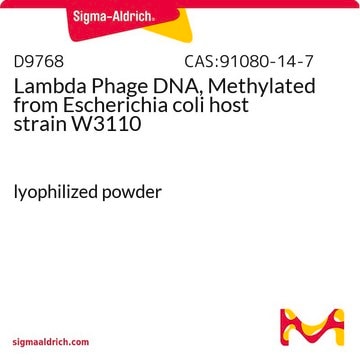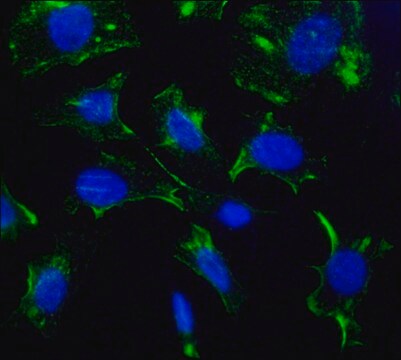F4767
Filipin III aus Streptomyces filipinensis
≥85% (HPLC)
Synonym(e):
Filimarisin
About This Item
Empfohlene Produkte
Qualitätsniveau
Assay
≥85% (HPLC)
Form
powder
mp (Schmelzpunkt)
163-180 °C
Löslichkeit
methanol: 9.80-10.20 mg/mL, clear, colorless to yellow
Wirkungsspektrum von Antibiotika
fungi
yeast
Wirkungsweise
cell membrane | interferes
Lagertemp.
−20°C
SMILES String
CCCCCC(O)C1C(O)CC(O)CC(O)CC(O)CC(O)CC(O)CC(O)C(C)=C\C=C\C=C\C=C\C=C\C(O)C(C)OC1=O
InChI
1S/C35H58O11/c1-4-5-11-16-31(42)34-33(44)22-29(40)20-27(38)18-25(36)17-26(37)19-28(39)21-32(43)23(2)14-12-9-7-6-8-10-13-15-30(41)24(3)46-35(34)45/h6-10,12-15,24-34,36-44H,4-5,11,16-22H2,1-3H3/b7-6+,10-8+,12-9+,15-13+,23-14-
InChIKey
IMQSIXYSKPIGPD-BWJOQPJXSA-N
Verwandte Kategorien
Anwendung
Biochem./physiol. Wirkung
Sonstige Hinweise
Signalwort
Warning
H-Sätze
Gefahreneinstufungen
Eye Irrit. 2 - Skin Irrit. 2 - STOT SE 3
Zielorgane
Respiratory system
Lagerklassenschlüssel
11 - Combustible Solids
WGK
WGK 3
Flammpunkt (°F)
Not applicable
Flammpunkt (°C)
Not applicable
Persönliche Schutzausrüstung
dust mask type N95 (US), Eyeshields, Gloves
Analysenzertifikate (COA)
Suchen Sie nach Analysenzertifikate (COA), indem Sie die Lot-/Chargennummer des Produkts eingeben. Lot- und Chargennummern sind auf dem Produktetikett hinter den Wörtern ‘Lot’ oder ‘Batch’ (Lot oder Charge) zu finden.
Besitzen Sie dieses Produkt bereits?
In der Dokumentenbibliothek finden Sie die Dokumentation zu den Produkten, die Sie kürzlich erworben haben.
Kunden haben sich ebenfalls angesehen
Unser Team von Wissenschaftlern verfügt über Erfahrung in allen Forschungsbereichen einschließlich Life Science, Materialwissenschaften, chemischer Synthese, Chromatographie, Analytik und vielen mehr..
Setzen Sie sich mit dem technischen Dienst in Verbindung.














